Roulette Tips &
Roulette Factors
Jafco
Roulette
These roulette notes are
intended to offer player information for roulette system players of all
standards. If you want to win at roulette or are already winning at roulette then
there will be plenty of roulette tips to match your game style.
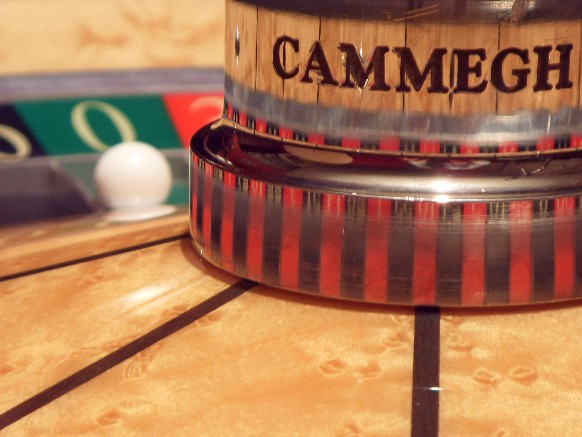
30 years of playing and
researching roulette has taken me from the initial learning of how to win at
roulette through to discovering the larger and more significant dimension of
the game that involves the external and mysterious aspects of roulette, such as
temperature, pressure, weather and gravity.
Professional Roulette Play
Professional roulette is
about playing in comfort and knowing for sure that the chosen method for
roulette play has been fully tested in advance and already proven to show a
long term winning roulette margin. Casinos are not the place for practice!
One of the frustrations
of pro-roulette play is that all wheels have their own unique characteristics,
known generally as “roulette wheel signature” and they will each offer up a
wide variety of margin levels. The reason this can be an issue is that the
player never actually knows the precise margin at any given time and this is even
more tricky when it comes to the lower winning margins which are worth playing
but harder to exactly asses how good they are.
You can imagine how
straight forward it would be if the precise winning margin was known, and by
that I don’t mean guaranteed winners or anything but just the true winning
edge. If I said I would pay 7 to 1 each time you throw a six on a dice you
would make money with certainty and apart from some unlucky periods you could
accurately predict the level of money that you would make in the long term.
This gives the player immense confidence.
We don’t have this
luxury when playing roulette except to an extent when playing the biased number
system which would also result in a more predictable way.
The reality is that
paying 7 to 1 on a dice may look good but it is a margin level below that which
can be achieved on some roulette wheels. So, for the professional roulette
player one of the first skills is being good at assessing the roulette wheel
signature and estimating the margin level at any given time. Doing this well
will help when it comes to devising the best roulette betting strategy and bet
size that most suits the situation in hand.
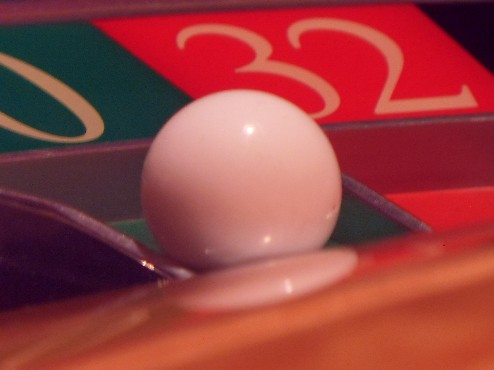
Roulette
Systems That Work
Apart from playing
biased roulette numbers, it is my view that the only roulette systems that can
work are those that give primary consideration to the action of the roulette
ball. In roulette the ball is king because the moving roulette wheel can be
easily assessed using simple mathematics but all the rest of the roulette
science and especially the physics relates to the ball action and how it may
skid, roll, spin, run long, run short etc etc.
With biased number play
the most significant factor is usually something like a broken or cracked
pocket Fret and although there are many reasons why a number or sector of
numbers may become biased the important point is that as a system it relies
purely on a fault in the roulette wheel and hardly at all on the way the
roulette ball orbits, spins or bounces. For these reasons this workable and
winning method of playing roulette stands separated from all other roulette
systems that work in that it is the only one that does not depend on the
external conditions that affect the physical behaviour of the roulette ball.
jafcoroulette.com
Quick Tips for Biased Roulette
Numbers
1. Remember to
log and separate the number data for each direction of the wheel. It is quite
unlikely that a fault in the wheel will present itself in the same way for both
wheel directions.
2. It is
important to chart the look of the roulette wheel in terms of distinguishing
marks and scratches. This way you can always track the movement or twists of
any wheel that you know. It is very reassuring to know that the number data is
accurate and that time is not being wasted by mixing data between two or more
wheels.
3. The level at
which a number may be considered biased is debatable but having researched this
over the years I would advise that the thresholds shown below are widely
considered as reasonable.
1000 spins number occurrence required 40
3000 spins number occurrence required 103
5000 spins number occurrence required 162
4. Once a player
has located a biased number, he is then faced with an important decision as to
what strategy to apply. This will mainly depend on the level of bias and the
situation. If for instance you find a medium biased wheel at your local casino
then a long term and unnoticeable strategy may be the best. If however you found
something powerful whilst travelling then a fairly sizable strike may be the
order of the day!
5. Last but
certainly not least, it is worth pointing out that with advances in technology
it has become harder to find such wheels, though there are still plenty around. The key therefore to playing this
system in the modern day is to know how to spot these biased numbers extra fast
and without having to collect anything like the amount of data in the
traditional way, as shown above. I can’t publish this extra information for
obvious reasons but can make it available to customers.
In my view this is more
of a bonus system worth knowing about and being prepared for when you come
across such a wheel whilst continuing to play the Jafco roulette systems, which
focus on a far more modern and lesser known type of wheel bias.
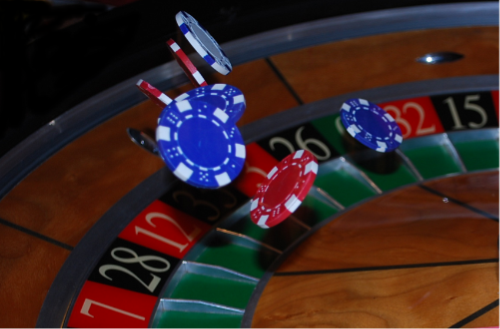
Visual and Mechanical
Roulette Systems
As soon as the visual or
mechanical roulette system player discovers the winning way to beat roulette
they just as soon realize that a perfect betting position one day may well not
be such a perfect position by the next day or even the next hour. The simple
fact is that the result of a roulette ball spin will almost entirely depend on
the behaviour of the roulette ball which is changing all the time. A slight
rise in temperature will be enough to make the ball run longer.
With such a variety of
roulette playing conditions available it is easy to understand that to ignore
the roulette ball’s changing action would be a roulette system suicide and why
It is my view that not only do all winning systems need to consider the
roulette ball activity but that they also have no hope of working without doing
so.
The visual and
mechanical roulette systems are both based on all the same principles and
secrets of the roulette game. Each style has its own unique advantages but as
one might expect the higher roulette margin potential will always be obtained
mechanically owing to the obvious increases in accuracy.
Top class roulette
systems will expose the hot betting areas on wheels based on the interaction of
the landing pins, the roulette rota speed and the all important conditions that
affect the spinning roulette ball.
Roulette Dealer’s Ball Release Action
The roulette croupier
will throw the ball using either a forward push with one finger behind the ball
or with what we call a flick spin with two fingers behind the ball and flicking
the fingers to release it, often resulting in additional ball spin.
The flick throwing of a
roulette ball is used far less commonly these days, probably because it is
harder to do and is therefore taught less often. If you have the choice, you
will almost certainly be better off in the long term playing more of the
forward push style spins.
The roulette dealer also
controls how much force they apply to any individual throw. If they are one of
those dealers that tends to operate on “auto pilot” they will be preferable in
that a repetitive throw adds to the reliability of the best betting position.
As we pick up the spin after the throw we can naturally adjust for the dealer
who likes to vary the ball throw more and this simply requires accurate
measurement and awareness.
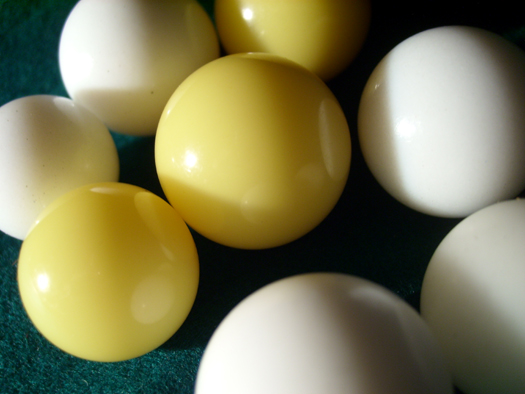
Roulette
Ball Spin Action
Where and how the ball
lands will mainly depend on the speed of the ball and even more significantly,
the way in which the roulette ball is spinning or rolling .
If we put some spin on a
tennis ball we know that it will deflect away at a different angle when it
lands and this action is exactly the same when a spinning roulette ball makes
contact with one of the landing pins (diamonds).
The natural conclusion
of this information is that when the ball has excessive spin on landing the
potential for repetitive roulette will be greatly reduced during these periods.
The roulette ball will
start its journey with a combination of skidding and spinning. As the ball
decelerates it will convert its spin energy into orbit energy, a more
comfortable and rolling state. This conversion, which I call ‘the roulette ball
release’ can occur quite early in the spin, late in the spin or it can fail to
convert in full ~ even not at all ! It is also know by other roulette
professionals as the knee point. I call it a release point as this is how it
both looks and sounds.
Surrounding the ball is
a molecular sized band of air known as the Boundary Layer. This is why the ball
is not technically rolling on the wooden roulette ball track but is in reality
surrounded by moving layer or air.
If and when The Boundary
Layer becomes turbulent then all hell breaks loose and the ball will be far
less able to convert its spin energy before it lands.
The level of boundary
layer disturbance will vary from one period to another and when it is strongly
turbulent the ball will arrive fizzing with spin and ready to fly off the
landing diamond, ending up in a far less predictable area of the roulette
wheel.
When the Boundary layer
is calm the roulette ball will end its spin with a more noticeable rolling
action, a slower speed and ending with what we call ‘ a dead ball’ bounce where
the roulette ball hits the pin with little speed and no spin and just dies into
the pocket, under or around the pin. This is certainly what we would describe
as good condition,s though there are other very playable ball states as well.
Roulette balls can also
be affected by drag spin and depending how this occurs, it will either be
perfect for playing or equally as bad for playing.
Ballistics science
shows us how a projectile is affected by the state of the air that it travels
through. As the air density and more specifically the viscosity of the air
changes it will offer up varying levels of drag friction.
When the ball is
affected by drag spin the roulette system professional will notice a ball that
spins around very fast and then appear to suddenly apply its breaks. The ball
comes to rest far quicker than normal and will then dive into the nearest pocket
possible on landing. The good part to drag spin is down to the fact that these
types of spins tend to land with a very short bounce, offering the pro roulette
player increased control on his betting position which is always most accurate
when able to aim right under the pin.
The bad part to drag
spin is when the conditions are mixed with only some ball spins being affected
by drag. This causes big problems when assessing the ball speed and more
problems when it comes to predicting the bounce. It is during these mixed up
conditions that the pro roulette player should hold back from getting
unnecessarily involved.
There are many other
types of ball action which are easily recognizable to the Jafco roulette players,
who all have a system where the betting position is instantly movable to match
the changing conditions of the roulette ball.
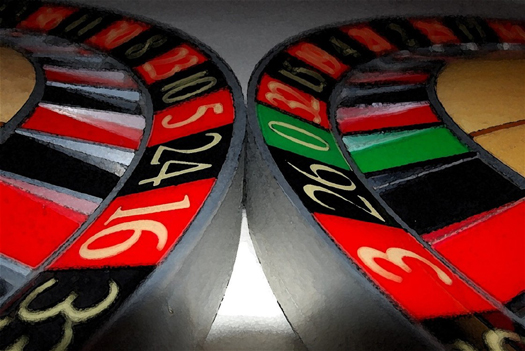
Roulette
Playing Conditions
With so many different
roulette ball behaviours it is clear that a number of precautions should always
be taken by the roulette-pro.
1. The system
player should always take time to view the general action of the ball before
choosing to play. There are also other factors to consider before playing
roulette, including the type of roulette wheel and croupier, but most
significantly the roulette pro needs to focus on the state of the roulette ball
and how it is spinning, rolling and bouncing. If in doubt then stay out and
wait for the period to calm down, as it always will eventually
2. With there being
good periods and bad periods for playing roulette it is clear that one key
factor is to bet the vast majority of the money during the best periods and
save the bets when it’s bad conditions for play. This is where the true meaning
of the expression `Roulette bet Pressing’ came from, when a few very good
players in the early years of the game noticed this phenomena and played to it,
giving other non system players the false impression that the key to winning at
roulette was to simply press when one is winnin,g which in normal playing terms
would be fairly disastrous.
If you have a good system
then press the bets when the conditions are at their best and bet less or not
at all when they are bad. If this is done wisely it will add much to your
normal roulette playing edge.
3. Casinos have
counter measures against good players and are frequently twisting and swapping
roulette wheels around and it is the roulette pro who will have it all checked
out and keeping one step ahead of the game in hand.
When all the right
playing conditions come together, we can then win a month of money in 30
minutes.

Keywords relating to this roulette article; Roulette ball
physics, ball spin , conditions for roulette Winners at roulette, Roulette
computers and systems
Copyright 2011 Jafco. All rights reserve.
Jafcoroulette.com
|